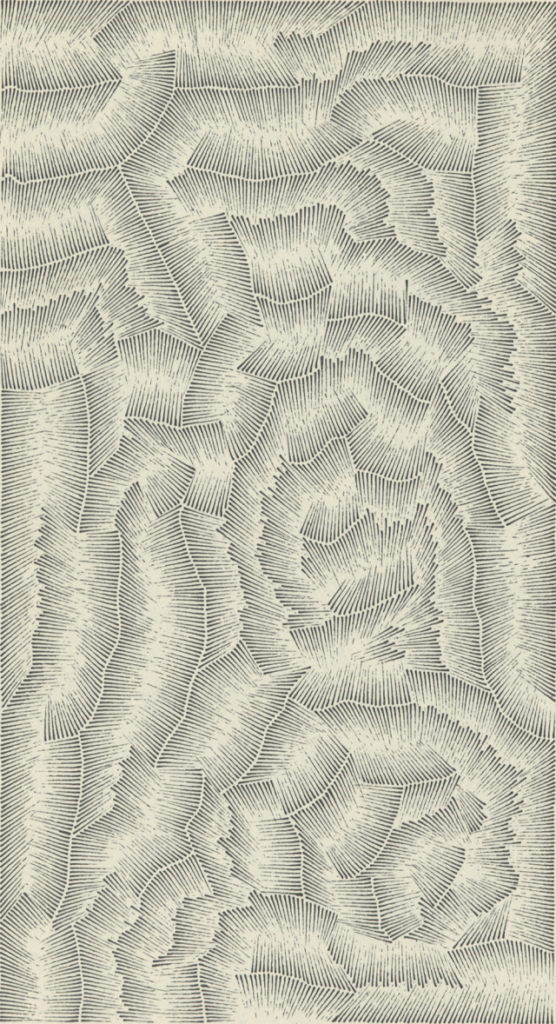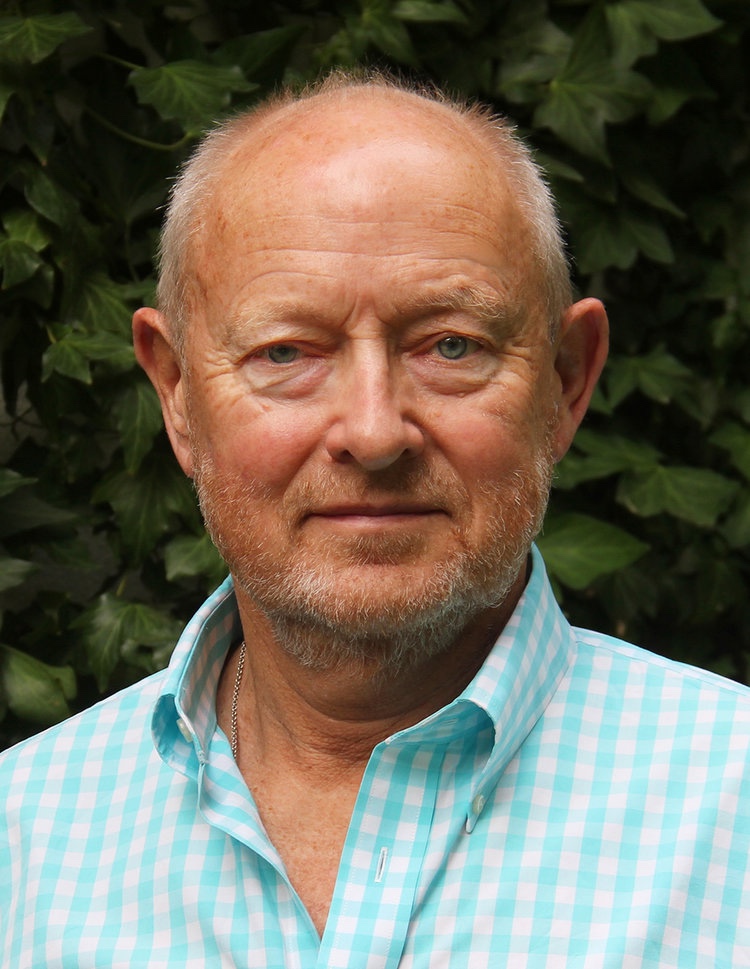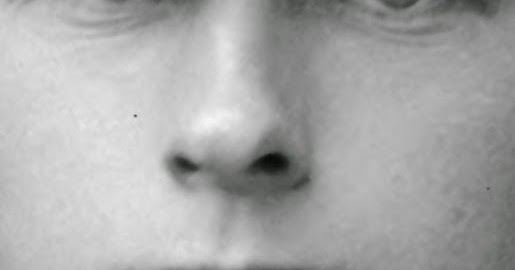
How Bennington College Saved University of the Arts’ Dance Programs After the School’s Sudden Closure
On a Friday afternoon on the last day of May, Donna Faye Burchfield was sitting on her deck in Philadelphia when a newspaper notification popped up on her friend’s phone: University of the Arts, where Burchfield had been dean of the School of Dance since 2010, was closing its doors in a week—for good. Were Burchfield and her colleagues given any warning? “Of course not,” she says with a laugh, still incredulous months after the fact. “And we had 31 students scheduled to leave for France in less than two weeks for the low-residency MFA program.”
Burchfield spent the rest of the night pacing her apartment, trying to process the shock. The next morning, she started making phone calls, relying on friends and colleagues in the field to help her compile a list of contacts who might be able to help. “I didn’t even know what I was going to ask for,” she remembers. “It was like being lost at sea. I needed to figure how to get to land.”
Eventually, Burchfield was connected to Bennington College president Laura Walker and provost Maurice Hall, and described her most immediate concern: that the 13 UArts low-residency MFA students expected to graduate at the end of the summer—many of whom had already accepted job offers predicated on earning their degrees—would be able to do so. “I explained that,” says Burchfield, “and Laura said, ‘Don’t stop there. How else can Bennington help? What else do you need?’ ”
Just two months later, thanks to Walker’s heroic fundraising efforts and the generosity of three major donors, The New York Times announced that the UArts School of Dance would be revived at Bennington College. In September, 36 BFA students, 20 continuing low-residency MFA students, and 13 faculty members matriculated to Bennington, trading UArts’ urban Philadelphia setting for Bennington’s pastoral Vermont campus.
While the partnership might seem unexpected, both Burchfield and Walker see it as a serendipitous continuation of Bennington’s modern dance legacy. In 1934, a group of artists including Martha Graham, Doris Humphrey, Hanya Holm, and Charles Weidman helped to launch the Bennington School of Dance, a summer festival that acted as both a training program and a creative laboratory. In the decades since, dance has continued to play an important role at the college, with notable teachers including José Limón, Judith Dunn, and Steve Paxton.


“There’s a direct line from our founding dance faculty to what we’re doing now,” says Walker. “Bennington was the first college to put the arts at the center of the curriculum, and that still informs everything we do.” Other Philadelphia-based schools, like Temple University and Drexel University, offered to absorb UArts students and faculty. But Burchfield understood that what made UArts’ dance program special was more than just its people. “We were looking for a place where we could hold on to the ways that we’ve taught students,” she says. “There was already a history of experimental pedagogy in place at Bennington.”
A new program, made up of former UArts students and faculty, now exists alongside Bennington’s BA in dance. While the BFA is more geared towards preparing dancers for performance careers and the BA is primarily focused on choreography, interdisciplinary research, and critical inquiry, students are free to take classes across both tracks. Outside of their BFA classes—which will be taught by many former UArts professors (including Shayla-Vie Jenkins and Jesse Zaritt, who will act as faculty advisors), mostly in a rotating group who will visit Bennington to teach in three- and seven-week stints—the transfer students will be fully integrated into life at Bennington, living in campus housing and choosing their own BA courses. UArts’ low-residency MFA students will go to Bennington’s campus over the college’s fall and spring breaks, and then spend six weeks over the summer in Montpellier, France, just as they did before the merger.
While Walker and Burchfield hope that the UArts transplants feel settled in Vermont this year, they’re still hoping to find a satellite space in Philadelphia where the BFA program can build a home. “Philadelphia has such a rich cultural life,” says Walker. “I’m really excited about having an outpost in the city that all of Bennington College can use.”
Before the start of the academic year, Burchfield and her team laid down a support floor in Bennington’s student union, transforming it into a studio for the BFA students. “It was like this space was waiting for the floor to be laid. All those folks and all that labor, it still lives here,” says Burchfield, referencing Bennington’s dance history. But it’s Burchfield and Walker’s steadfast belief in arts education that’s allowing that legacy to continue to grow. As of press time, dance is the only one of UArts’ schools to find a way forward for a large group of students and faculty.
Walker hopes that this collaboration can serve as a blueprint for other programs suffering in the future. “As the arts are under attack, we need to find new models to ensure that programs like this, that are extraordinary, will continue,” she says. To that end, Burchfield has hung a quote by Merce Cunningham dancer Viola Farber—another member of Bennington’s storied dance faculty—on the door of her new office. It reads: “I think somehow all of us who work at dancing inspire one another; whether we have anything specifically to do with each other or not.”

Japanese Architecture Meets Champagne at Maison Ruinart
Like champagne itself, the revitalized Maison Ruinart in Reims, France emanates a sense of lightness and effervescence. After two years of meticulous restoration, this historic address, deeply rooted in the winemaking tradition of Champagne, has been reborn with a fresh, modern vision – one that captures the very essence of champagne through architecture, design, and landscape. Led by a renowned team consisting of Japanese architect Sou Fujimoto, landscape designer Christophe Gautrand, and interior architect Gwenaël Nicolas, the collaborative design includes a new pavilion of stone and glass, nestled within a public sculpture garden that champions local biodiversity.
Fujimoto’s design draws inspiration from the lightness of champagne bubbles, forming an airy, asymmetrical structure with sweeping curves that echo the roundness of a champagne glass. Fujimoto goes on to say, “Through the pavilion’s bay window, facing the main courtyard, you see Maison Ruinart as if in a dream.” The pavilion’s transparent wall opens to the main courtyard, allowing visitors to view both the historic surroundings and the landscape beyond in one fluid scene. Inside, visitors experience a blend of light and shadow, moving through connected spaces that reflect the limestone-rich landscape of the region. With its winding paths and expansive glass, the pavilion offers a sensory journey that emphasizes the subtle beauty of nature.
The interiors blend textures and hues in a nod to Ruinart’s chardonnay vineyards, with details like green-toned upholstery and oak and beech furnishings that evoke petal-like forms. Floating glass bubbles by Atelier Barrois decorate the bar, adding to the dreamlike atmosphere. An intimate cellar beneath the pavilion offers a secluded tasting experience for enthusiasts, featuring Ruinart’s rarest vintages. “I wanted to strike the right balance between the history of an ageold Maison and a more contemporary perspective. Visitors are invited to plunge into the world of Ruinart, feeling both guided and free to explore as they please,” says interior architect Gwenaël Nicolas.
The restored site not only honors the heritage of Maison Ruinart but serves as a place for modern dialogue, welcoming artisans, artists, chefs, and visitors to engage in a shared celebration of culture, history, and the art of champagne.
Photography by Raul Cabrera.

The Paris Review – Dreaming Within the Text: Notebooks on Herman Melville
From Six Drawings by Robert Horvitz, a portfolio published by The Paris Review in 1978.
The following entries came from notebooks the writer and psychoanalyst Christopher Bollas kept between 1974 and 1977. These notebooks were not written or edited for publication–Bollas says they were more like “mental scratch pads where the author simply writes out what he is thinking in the moment without, ironically, thinking about it.” The entries touch on things Bollas was reading at the time, scenes he saw in London, what he was observing in patients–and, more often than not, the ways these all intersected in his thoughts. We selected these entries in part because they cover a period of time when he was reading and thinking on and off about the work of Herman Melville, alongside many other questions about character, the self, and others.
Undated entry, 1974
Let us imagine that all neuroses and psychoses are the self’s way of speaking the unspeakable. The task of analysis is to provide an ambience in which the neurotic or characterological speech can be spoken to the analyst and understood. It is not so much [a question of] what are the epistemologies of each disorder but what does psychoanalytical treatment tell us about them? We must conclude that it tells us that all conflict is flight from the object and that analysis restores the structure of a relation so that the patient can engage in a dialogue with the object.
The style of the obsessive-compulsive, for example, is in the nature of a closed cognitive and active world. If obsessive-compulsive behavior is memory, what is being recalled? It seems to me that obsessive-compulsive behavior is a mimetic caricature of rigid mothering. It is caricatured self-mothering which [may] recall [interpret] the mother’s handling of the child.
How else can we account for the shifts in disorders if we don’t take into account the paradigms which generate them? Insofar as we know that patterns of mothering vary historically, can’t we assume that each disorder remembers the primary object relation? Indeed, why else does psychoanalysis go back to childhood when presented with conflict? Because it is understood by most to be functionally derivative of infancy.
The only problem is that the philosophical assumptions of this hypothesis remain unappreciated, to wit, all disorders speak the individual’s past and they ultimately speak the subject’s interpretation of the past and therefore are a form of remembering. The advantage of this to the person is to value his disorder as a statement, not simply a dysfunction. This is the difference between the hermeneutic and functional traditions of psychoanalysis.
A symptom is a way of thinking. Remembering is a way of thinking. Symptoms are some form of the subject’s thinking about himself. Psychoanalysis is a way of two people thinking together about one person’s thinking.
A patient brings a mood, thought, confusion, a blank—collages of himself—and the analyst provides the space. The therapeutic alliance is simply: we are thinking and working together. The transference and countertransference: we are feeling for each other together.
Undated, 1974
“American literature”
American writers speak the true self, while the country doesn’t listen. Melville tries to identify with this American false self—the external explorer and conqueror—but fails and the true self breaks through.
Undated, 1974
“Ahab”
What is absolutely essential is to keep in mind that Moby Dick is an invention, a projected object. The horrid irony of Ahab’s effort to break through the “pasteboard mask” is that he is the object behind the mask! He is the originating subjectivity. Does Melville make this irony specific?
The five phantoms loosed in chapter 47 are the loosening of Ahab’s internal objects: or the objectivization of internal selves. Rage permits the dissociations to be loosed though never integrated. Rage—especially in the search for the whale—is a loosening of or an exorcism of internal objects. The whole point of the trip is to exorcise the phantoms and to put them into the whale.
Undated, 1975
It is one of the ironies of existence that you can love the other only after you have lost the other. With ego development the fusion with the other is lost, a necessary precondition for recognizing the other’s separateness, but nonetheless a losing of one’s [fused] self.
Undated, 1975
“Melville’s ethics”
At a time when the other is sought outside, as a deity, an idea, or history, Melville’s hero points toward the struggle to find other as the unconscious self. In a sense as man has destroyed culture (collective dream/play space) he then assumes the responsibility of it and comes to a point of wisdom: culture always reflected him; he created it, it came from him. The sacred, profane, shared, etc., all experienced as outside; Melville says we must experience an inside other.
Thus he has in Mardi and in Moby-Dick a transitional metaphysical and psychical moment between other as outside (the whale) while Melville gently proves it to be inside the self. It is important to see this as Melville’s ethic. Outside, there is neither solution nor absolution; nor is either ever possible. Insight, the seeing into the self, to witness and behold the other as inside is the shock of re-cognition that Melville asks of us. It is the venue of the psychoanalyst as well, but the psychoanalyst after Freud’s metapsychological works processed the other and ethically disowned it.
Free association, which was a way of access, against the resistance of man, became a means of disowning the other by processing it. A novelist like Melville searches inside himself, comes to the point of seeing and holds the fundamental fact of the internal other.
December 10, 1975
“On good interpretation as poetry”
It is the form of an interpretation that is most effective. We must know that our best interpretations are poetic in their structure and delivery, so that the form holds words in such a way as to deeply affect the patient. In the same way, poetry rather than prose gets to us in a deeper way.
January 22, 1976
Out of the debris of our dying culture (early twentieth century) comes a new mythology and a new language. We see this early in Baudelaire who finds the symbolic inside the city; we discover it in Barthes (Mythologies) who creates a new mythology. It is godless. It is ordinary. As Barrett points out in Irrational Man, cubism is the ontologizing of the banal object, because out of the debris only objects are left.
The psychoanalytical experience is, in free association, the use of the ordinary (i.e., trivial language) to remythologize the person, to find his myth, his culture, through the debris. From the debris of his own words, which up till now he has found barren, a wasteland, he discovers meaning and then his own myth.
The analyst is the person, par excellence, who carries the person through the wasteland of the self, and who holds.
Where has the debris come from?
From an explosion in the nineteenth century of human value and belief. We are commodities, objects-to-ourselves, defined by use or function.
The death of culture. Debris. Playing with debris (Dadaism). Creating a new language.
The analytic process: death of the old self; debris and the sense of dislocation; playing with the debris; searching in anger, despair; through reflection, finding one’s self.
Barrett says that before man is a being, he is a “being-in” (111): taking Heidegger’s point about Being in the World. In modern man this Being in, or the essence of our being, has been lost. It can be re-found in psychoanalysis.
In Coleridge’s “Dejection: An Ode” and in Marx’s Economic and Philosophical Manuscripts we see man expressing his sense of loss of being-in the actual world. We have seen this earlier with Pascal, though in his situation it was as much the losing of a spiritual world: being in a world of spirit. Being-in spiritually (mythically) and Being-in actually (materially) have been severed. It is this loss which writes the “Wasteland” and founds existentialism.
Out of this comes man and world as debris, cut up in Dada and Joyce, and now a new myth of man emerges. What is the new man?
The silence of the patient comes after despair over the word. They have said, perhaps, a great deal, but begin to have a feeling of despair over the word. This despair sponsors a silence; it is silence in the face of the unthinkable; the absence in the core of a person over a truly spontaneous sense of being-in the world. Their speech has been a narrative account, a construction, often beautifully or bravely rendered.
The patient of today can speak only for so long. Speech is an effort. It is an attempt to hold off the void. (Pascal.) The silence denotes emptiness and the absence of the other. The analyst must be absence coming eventually into presence through holding.
We focus on the mother as the cause, but in fact, she is all that is left of one who gives meaning, breathes life into the other, and so we focus on her. She can never make up for the void in the culture. Our search into this relation, solely, is a misdirected one.
Character and creation. Our being does have voice through character. To hear it is a task, painful, awful. It is the voice of our emptiness yet through the transference—the analytic paradigm—our character changes.
In Moby-Dick the myth explodes (capitalism, Protestantism). We are left with Bartleby, mute among the debris—dead letters. The Confidence-Man remythologizes by manipulating the ordinary into the fantastic. He picks up debris and maps the fantastic.
After 1914 man learns, according to William Barrett, that the solitude of being a self is irreducible regardless of how completely we seem to be part of a social milieu. Man is no longer contained in a social fabric. But with our patients the tragedy is that each must fashion a life out of a wasteland.
In the sixties, politics, group movements, the therapies, communes, etc., were all attempts to fashion cultures. The Beatniks (Kerouac, etc.) were the first.
It is silly to say “counterculture” as there was no culture there in the first place.
Each of us carries within our own debris. It is our past: a past not held within a familial, social, and cultural container to be given recurrently back to us. We don’t know our past. We only have images, memories, pictures etc. We bring this flotsam to the analyst who gathers the pieces; he gives form to our content—if we can trust him to do this—we find our past. This is the analyst as the transformational object: the one who gives form to our content and thereby transforms the content itself, by giving it meaning.
Out of the debris of our past emerges our own mythology. Why have I been so moved when on one bright day I witnessed from a 10,000-ft. peak of the Sierra Madre a tiny train thousands of feet below crossing the California desert? Why should this experience be so close to me, seem to hold me? It was a question, in fact, that I had never asked at the time. Its essence evaporated into the diversions of my life, though now and then I recovered it.
In analysis I found two things about myself. One was that, as my father had gone off to war when I was three months I did not see him until I was nearly two. I was overly eager not to see my mother disappear as well. At nursery school, it was my fate to stand up high on the steps of the slide—not to go down—in order to watch in the distance for the first sight of my mother who would come to collect me.
So being up high and searching for something vital and joyful was part of my personal idiom: the creation of my myth of significance and order.
The other mythical object was the train, which has always filled me with sadness and, strangely, contentment at the same time. So it was in my analysis that I discovered that it was by train that I left my birthplace and my father and also it was to the train station that every day my grandfather took me to see the train go by. Perhaps he did it out of his own love of trains or perhaps it was because I indicated my desire to see trains and he, in kindness, facilitated this wish. What the myth of trains gave to me in analysis, with the understanding of the essence of the aesthetic experience on the mountaintop, was how an experience visualised for me a deep myth: searching for recovery from my mother, longing to be reunited with my father. The experience of looking on the mountaintop was me.
May 9, 1976
“Metaphysical psychology”
Is it the eventual affirmation of the negative? Is Moby-Dick an affirmation of brotherhood, through the destruction of isolated fanaticisms? Ishmael lives to share a narrative with others, unifying men through discourse, while Ahab uses men to fulfill the fantastic demands of his private culture.
November 4, 1976
“On a character serving in a restaurant”
I am watching a young woman who is the waitress (wife) in an artificially lit Italian café that serves sandwiches to the English. The surroundings are without character, rather like the set of a television film, suggesting its impermanence. There is little here, except the come and go. The first time I ate here, she paid me no attention—flung the food on the table. Yet, tonight, I have discovered her use of herself as a character. She dissociates from the surroundings, defying the anomie by being a character. She throws her hands through her hair, punches out the orders, laughs or teases the locals—yet she is totally self contained. I find this interesting as I am reminded of Marx’s theory of alienation. She deals with it all by laboring her character: it becomes the surrounding of the self, and she looks no further.
Undated, 1977
“The text dreaming”
The text would have to undergo an experience of its own dream. Like the dreamer, the text would have to be confused. It is not simply the author who has the dream as the dream elements are already in the text at hand. With Stubb’s dream I must see what holds up to the dream and then what occurs after the dream.
The point is to establish the composition of the dream space, in literature or in life. It is an area of
1. Wonder or terror
2. Actualization
3. Enigmatic meaning
4. The place where the thinker is the thought of himself, or, the thinker the participant in the thought
The dream in literature must be a region of wonder, separate from yet reflexive to the rest of the text. It must be the dream’s text, as it must use and pit itself against the text, in order for us to consider it as a dream. A space in relation to the context of events in the fiction. Is it an allegory within an allegory?
What is the difference between a vision and a dream?
I am concerned with a text which has a dream, a moment when the continuity of its presence of mind is interrupted by a dissociation in its consciousness, in a space that I have called the dream space. The text can have its own dream if at this moment the cumulative experience of imagery-making, of plot construction, of characterization, breaks down into a self-reflexive dream process. This is rather like a breakdown, but a breakdown of a very special kind. In such moments the author yields, under the demand of the text’s unconscious logic, to the text’s (and his) need to share a dream with each other. (So, the author shares a dream with his text!) We could say that this moment will be more available in the modern novel, where the author already has found an intimacy of rapport with the text, where he uses more the idioms of his own internal psychic structures than the conventions of literary creativity. Even so, few authors—as Poulet insists—achieve a level of sincerity toward their own text. I should say, an intimacy where the text is the container of unintegrated subjectivity, and where the author’s Other is not an alienated moi, but a subjective object.
To the person writing or dreaming, writing (or textualization) and dreaming are processes of thinking about being, not products. We must, as E. Said argues, reacquaint ourselves with writing as a process, not a finished product.
This can also happen because an author, like Melville, needs to dream within the text; though the experience of the dream will be in the textual space, will use the history of the text for the dream material, and, as such, will be the text’s dream. If an author, like Melville, yields himself to the text, then we can say that the text will dream him, or dream about him.
April 26, 1977
“Melville”
The core fantasy seems to be of a desire for an object to be plundered. In Moby-Dick this was the whale, but this leads to annihilation. In “Bartleby” there is a desire for the experience to be provided by the other (the employer), with a dead ending in the brick-wall prison. In “I and My Chimney” there is an attachment to the object as inanimate and under the fantasy control of the self.
What can we call this cluster? It is a private phantasy: an autistic phantasy that materializes within the fiction, but isn’t made explicit as such. In “Bartleby” it is addressed to the other. In Pierre what do we make of the episode when the character crawls under the rock, to be born again? Is that another cluster? Is the fictional space a place where Melville can have this phantasy? An autistic voice?
May 2, 1977
“Melville”
Literary perversion.
Idiot event.
Burlesque.
Are there certain fantasies of the text that are not thoughts per se but ritual enactments of ego structures? Deep memories, paradigms, of the subject’s experience of the other?
Is an allegorical personification a character? Insofar as this structure speaks structurally, it is.
The idiomatic arrangement of character structures is the voice of character: the interpretation of self.
Does character speak in fiction more uniquely as the other becomes a phantom (death of God) eliciting a mute yell from the subject—as the voice of character? All character is utterance to an absent other, and with the death of God, this absence provokes deep language cries.
In some characterizations—especially sagas—we must ask, What is left out? The character may be noble, set against a surrounding world that is very violent. This is the split-off voice of character, which in the nineteenth century is joined to the self. Character defends the self against the internal world.
How does character relate—i.e., to us, the objects around it? Such use, does it reveal idioms?
The absence of a specific character language, particularly the person who seems to be strong and induces our projective identifications, creates a dream space for us. Character is the container of the reading subject’s pure self. We are Other.
May 3, 1977
“Character in fiction”
Does character in fiction depend on what the hero deals with or transforms? Where are the events of being? Character has to do with the idiom of transformation: an interpretation of the self. Where is the locus of transformation in fiction: in the author, or, is it yielded over to character?
What is the relation of character to the author’s use of character?
Character in fiction is a type of speech which may or may not occur in fiction. It is an interpretation of the self. If it is only a rhetorical device, it will only be interpreting the self as a rhetorical act. However, if the self experiences an internal world and relating, then character speech may occur as a reading of that self.
Rhetorical versus psychological character.
How do we experience the character in fiction? Or, how do others [other characters in a novel] experience the character in fiction? He is set up in others and in the reader. Is the text, the Other for the character? Does it reply to him or hold him?
Does character reflect the mental process of the text? Is character an interpretation of being inside the text? Where text is the psychical process, does character interpret this?
Undated, 1977
“Character”
Character in a text expresses something. Invariably, it is the discourse of structure, of handling by a self, and is a different hermeneutic. A character may say “I love you” but the formality of his being may say “Only at a safe distance do I love you.” This speech is the discourse of character and is a subjective interpretation of the self rather than the professed themes uttered by the subject. Think of Heidegger’s notion of the existence-structure of the self. Ishmael and Ahab transform the subject “I will hunt the whale” in different ways. Their style of handling is an interpretation of the self. It will speak fundamental paradigms of transformation of need, desire, fear, etc., of instincts and relating to the object. When an author releases different characters into fiction he is releasing varying ego structures in himself, different selves, to personify aesthetics of being.
“The Aesthetics of Being: Character as Discourse on the Self.”
We cannot decenter character from the crucial reality that there is an interpretive presence in character. The structures of character are idiomatic internalisations of self-object (and self as instinctual presence as object) relations. These are matters of choice. Ishmael and Ahab make choices derived from their different ego structures.
By releasing character the author uses different styles of transformation of desire and relating to the other.
In fiction, each character embodies a character memory.
Does any of it have to do with the experience of the text? In the sense that an author may release his internal world into the text, characters are different modes (ego structures) of handling and interpreting these themes. This handling (transformation) is the aesthetic of character.
Ego structure. The infant experiences the mother. On the basis of the infant’s experience of the mother he makes choices about handling the mother.
In Moby-Dick Melville puts one ill and one healthy ego structure alongside one another, in the juxtaposition of Ahab and Ishmael.
The mother’s handling of her infant is an aesthetic and points the way to her notion of the baby’s body and self. Her handling complements the baby’s emergent ego (handling) functions. As the mother handles instinct and impulse, so the baby internalizes her paradigms. This is the internalization of an interpretation of the self.
Undated, 1977
“Metaphor as secret”
Metaphor takes a word which applies to one thing and transfers it to another because it seems a natural transfer. This occurs in Melville’s pyramid fantasies where clusters of metaphor sequester hidden meanings. The chimney has hidden spaces and is a metaphor of secret places. Such an act is at the root of fiction. Keeping the source a secret, yet communicating from it. Is it some deep ego structure that finds symbolic equations for itself?
Undated, 1977
“Character versus subjectivity”
Character is memory. It is an aesthetic of being that forms and transforms experience according to an unconscious hermeneutic. It is mute in the sense that the receiver is absent (except in analysis) and the subject who enacts his character is blind and deaf to his aesthetic.
In a sense, character reserves an interpretation of being that may be at variance with the person’s subjective notion of their essence. It is a clash between the discourse of character—which speaks through the aesthetic of being—and the voice of desire: the subject’s play of the imaginative possibilities of self.
This is, perhaps, best illustrated in a person who is (as existent-structure) a certain way. He handles himself and others in a certain style. A syntax of being and relating. Now, all this may be unknown by the subject and, indeed, at wild variance with his own “internal world” or, at least, his experience of the world.
It raises the question: What is subjectivity? Or, can there be a genuine subjectivity without hearing from the discourse of character? I think the discourse of character is a mute speech. It means “listening” to one’s silent speech, almost as if we bear with us a shadow self who prints in an aesthetics of being a dialogue with an absent object. In psychoanalysis, this absent object may reappear in the transference.
In fiction, at least the modern novel, character may exist alongside consciousness; in particular, the consciousness of the author … or the world of the novel. What is the discourse of the self? Does the consciousness of the author grapple with the violence of character; or, is it remedied by superficial placing in indexical tongues (sociological matrices) rather than as an idiomatic—unconscious—discourse of the ego: the impersonal self?
What novels do I know of where the subject grapples with character? Moby-Dick, Crime and Punishment. It means a conscious confrontation with the mute determinacy of one’s idiomatic discourse. Character is autistic, in that the receiver of the discourse is absent (the object of all characterological defenses) and the language is, thereby, a dead language. It is the fact that character is a dead language—a language no longer spoken between the original speakers—that gives critics the sense that character is conservative, or inhibiting.
Most novelists understand only the effect of character—that is, linking it with mute determinacy—and this principle is then reprinted in a novel, in social terms (cf. Goffman), but that is not the truth of character, which is deeply enigmatic and aggravating.
Many novels are an attempt to escape the enigma of character by a manic-omnipotent staging of character, giving to themselves a control over character—“characterization”—that is a denial of the very experiences of one’s character.
Recent psychoanalytical studies of the self—in particular, the borderline and narcissistic—are concerned really with a patient whose primary speech is character, whose “subjective” life is blank or chaotic and who refuses to be informed as a subject, of themselves as a character.
Character is destiny if understood, and fate if not understood.
Few authors permit this determinacy to be with them. Their act of omnipotent creation defies destiny. Yet some writers do: Melville, Shakespeare.
December 15, 1977
“Denial and paranoia”
A patient denies memory and both severs and dissolves linking, so he has no internal, accrued sense of self. He has no tradition upon which he can rest. His unconscious motivation is to deny the absence of a transformational object and to reject what is, to use the semiology of the self as a reproach to the other, who must feel guilt.
But, the attack on linking leaves him without structured psychological means of living-in-the-world. To survive, he uses paranoid vigilance—to scan the environment—instead of psychic insight, to know the self. Hence, paranoid thinking is a defense against anxiety surrounding survival of the self, that occurs when there has been an unconscious subversion of psychological insight. That is why he is not concerned with knowing himself or with insight, but only with how I feel about him and whether he is in trouble or not.
Christopher Bollas is a psychoanalyst and writer whose books include The Shadow of the Object, Cracking Up, and Meaning and Melancholia, among others. This extract is adapted from Streams of Consciousness: Notebooks, 1974-1990, which will be published by Karnac Books in England in October.

Dealer Michael Findlay on Collectors, Curiosity, and Changes
Michael Findlay started directing gallery programs in 1960s New York and has written about that period in his latest book, Portrait of the Art Dealer as a Young Man: New York in the Sixties.
I talk with Michael about his extensive career and how things have changed over the past 60 years.
He discusses the qualities of a good collector, the evolving relationship between dealer and artist, and the current focus of many collectors on art as investment rather than appreciation. We also talk about the importance of looking—of immersing oneself in the art rather than relying on text and labels.
We finish up with a funny personal story about Andy Warhol.

Pennsylvania’s colorful ‘Graffiti Highway’ is being shut down for good
Erasing the ‘Graffiti Highway’: Abandoned stretch of road near Pennsylvania’s infamous ghost town, Centralia – that has been on fire for 58 years – is covered up with dirt and shut down after visitors swarm the site during coronavirus lockdown
A dump truck unloads a pile of dirt onto ‘Graffiti Highway’ outside the ghost town of Centralia, Pennsylvania in an effort to curb the spike in

Lights Out on August 4th
“The lamps are going out all over Europe; we shall not see them lit again in our lifetime” Sir Edward Grey, British Foreign Secretary, August 1914
National Library of Wales Cymru 1914 archive
turning off their lights from 10pm to 11pm on 4 August, leaving on a single
light or candle to mark the centenary of the outbreak of the First World War .
people are expected to participate and hundreds of local authorities, iconic
buildings, national organisations including the BBC and the Royal British
Legion, parish councils and places of worship have already pledged their
support. Iconic landmarks such Blackpool Illuminations, the Houses of
Parliament, Eden Project, Imperial War Museums and Tower Bridge will turn off
their lights; the Royal British Legion has launched a campaign for at least one
million candles to be lit across the UK and theatre productions including those
of the National Theatre’s War Horse, both nationally and internationally, will
invite their audiences to take part in LIGHTS OUT after their curtain calls.
by 14-18 NOW to create special public artworks, for one night only in the form of a light source.
North Wales Memorial Arch, Bangor. The memorial takes centre stage in front of
images projected onto the enormous facing wall of Bangor University’s new
Pontio Arts and Innovation Centre.
faces reveal something of the individual’s personality and personal sacrifice
in a war where death was measured in millions.
project Bedwyr Williams said: “As a young art student I walked past the
memorial arch in Bangor many times and I have to admit that I never gave it a
huge amount of thought. Working on this project I’ll never be able to walk past
this place again without thinking of the lives lost fighting in the First World
War.”
Avengers stars assemble to endorse Kamala Harris – by brainstorming an election catchphrase | Movies
The cast of Marvel’s Avengers movies have come out in support of Democratic presidential candidate Kamala Harris less than a week before the US election.
In a video posted first on Vanity Fair on Thursday evening, actors Robert Downey Jr, Scarlett Johansson, Mark Ruffalo, Don Cheadle, Chris Evans, Danai Gurira and Paul Bettany playfully riffed on their respective characters in the Marvel Cinematic Universe while encouraging viewers to vote for Harris.
The video, which runs for just over 90 seconds, opens with the actors taking an incoming video call from Johansson. On screen, they brainstorm ideas for a catchphrase for Harris, landing on the dubious “Down with Democracy”, which they spin into a brief Marvel-style Harris/Walz campaign video with dramatic music and comic-style graphics. The final frame of the video encourages viewers to vote on November 5.
Sharing the video on X, Ruffalo, a vocal Democrat supporter who is best known for his role as the Hulk, wrote: “Don’t sit this one out. It’s the one where we will lose big: Project 2025, women’s reproductive rights, climate change, LGBTQIA+ rights, public education, student debt relief, Affordable Care Act, Social Security, and as of today, life saving vaccines. This shit is real and it’s going to come for you.”
Speaking to Vanity Fair about the making of the video, Johansson, who played Black Widow in the Marvel films, said, “It just immediately turned into people trying to one-up each other with one-liners,” and joked that Downey Jr and Ruffalo were “bickering like two old ladies. And, of course, I’m the person that’s just trying to organise everybody. It’s very similar to what our dynamic is in the films. It was wonderful to feel everybody assemble around it, and hopefully it will engage our fans in the process of voting.”
Johansson initiated the project, reaching out to her fellow MCU alumni via their group chat and reminding them: “We’ve got a lot of powerful people on this thread, and it would be great to unite … in hopefully creating a bit of a viral moment for Kamala.”
The Avengers cast join a list of celebrities who have endorsed the Harris/Walz campaign, including Taylor Swift, Bruce Springsteen and Oprah. In the last week alone, Beyoncé, Madonna, Bad Bunny, Ricky Martin, LeBron James and the former Republican governor of California Arnold Schwarzenegger have all come out in support of Harris.
Paul Morrissey obituary | Movies
Andy Warhol’s films, which tested the endurance of audiences and made icons out of the marginalised and dissolute, altered profoundly the nature of cinema. Much of the work which bore his name from the late 1960s onwards, however, was made by the writer-director Paul Morrissey, who has died aged 86. “Warhol is a trade term,” said Morrissey. “Like Disney.”
About his famous friend and collaborator he could be comically scathing. “He didn’t have many points of view,” he said in 1996. “He didn’t have many ideas at all, actually. Maybe three. If he made a choice, it was almost always the worst possible choice in the world.”
Stephen Koch, the author of Stargazer: The Life, World and Films of Andy Warhol (1991), called the two men “mutually incompatible talents … Morrissey utterly blind to the refined complexity of Warhol’s experience of the world; Warhol wholly incompetent to assemble the often beguiling commercial product Morrissey sells under Warhol’s name.”
The first decade or so of Morrissey’s career was given over to orchestrating and managing projects under the Warhol name: not just the films but the stewardship of the avant garde rock pioneers the Velvet Underground (whom he had brought to Warhol’s attention) as well as the launch in 1969 of the influential magazine Interview, which Morrissey co-founded. It sometimes seemed as though the rest of his life was spent fighting to have his contribution recognised.
Morrissey was also Warhol’s personal manager from 1965 to 1974. Asked what this entailed, he said: “I had to think of things that he might do, I had to do them, and then I had to pretend that he was involved.” The two men met in the early 60s when they were both showing their work in New York. After Morrissey had assisted on, and co-directed, Warhol’s films for several years, a turning point arrived in 1968 in the shape of the camp western Lonesome Cowboys.
“Before that, I had been helping Andy make the kind of movies he wanted to make, which was the kind of movie which looked like nobody had made it,” Morrissey said in 1978. “Lonesome Cowboys was the first time we were making an effort.” The characters, including gay gunslingers, were still bickering and flirting and talking about their hairdos, as they had always done, only now they were doing it outdoors in Arizona, wearing costumes and riding horses, rather than lounging around in ratty Lower East Side apartments. This combination of tones and styles (timeless genre conventions side by side with a modern, spaced-out looseness) introduced a new piquancy.
Morrissey achieved his most striking results with the acute, funny and freewheeling trilogy of Flesh (1968), Trash (1970) and Heat (1972). Each showcased the sullen, swaggering beauty of Morrissey’s discovery Joe Dallesandro (immortalised as “Little Joe” in Lou Reed’s song Walk on the Wild Side), alongside “Warhol superstars” such as Viva and Jackie Curtis, and the transgender actors Candy Darling and Holly Woodlawn.
The pictures presented a compassionate portrait of outsiders struggling to make and maintain emotional connections. The great director George Cukor declared himself “lost in admiration” and even instigated a campaign, ultimately unsuccessful, to land an Oscar nomination for Woodlawn for her performance in Trash.
The plots of these movies were threadbare – Flesh, shot over the course of five Saturday afternoons, follows a hustler trying to drum up the money for a friend’s abortion – and sometimes second-hand. Heat, for instance, partially recycles Sunset Boulevard. But it was the attitude that counted, as well as the ambiguity over whether the films constituted art or reality. Though the performances could be affectless to the point of mundanity, Morrissey was adamant about the dividing line between cinema and life. “If a person is in front of a camera, they’re acting,” he said. “It’s not possible to live in front of a camera. What I always believed in was the truthfulness of artificiality.”
Born into an Irish Catholic family in New York, Paul was the son of Joseph, a lawyer, and his wife, Eleanor, and he remained a devout Catholic all his life. He was educated at Fordham preparatory school and Fordham University, where he began making 16mm films.
His first short depicted a priest saying mass on the edge of a cliff before throwing the altar boy to his death. Another, Civilization and Its Discontents, featured “a hood in a pea jacket strangling a fat albino” while Like Sleep showed two drug addicts nodding off. These brought him to Warhol’s attention and led to his involvement on films including My Hustler (1965) and Bike Boy (1967). His first feature-directing credit, shared with Warhol, was on the three-and-a-half hour, split-screen Chelsea Girls (1966). It was precisely the formalist experimentation of that film which some Warhol loyalists accused Morrissey of betraying when he manoeuvred the artist’s brand toward the ordered narratives of Hollywood melodrama.
While Warhol was recovering after being shot by Valerie Solanas, founder and sole member of the Society for Cutting Up Men (SCUM), Morrissey assumed full creative control over the films – or, rather, his creative control over them was finally made explicit. After Flesh, Trash, Heat, and Women in Revolt (1971), which included a send-up of SCUM in the shape of PIGs (Politically Involved Girls), Morrissey moved in a different direction. Taking Dallesandro with him, he made a pair of kitsch, gory but technically accomplished horror films in Italy: Flesh for Frankenstein (1973) – released in the US as Andy Warhol’s Frankenstein – and Blood for Dracula (1974). “I’m always a little afraid of getting stuck doing one thing,” he admitted.
No one could accuse him of that. Flesh for Frankenstein was shown initially in 3D, so that a man whose hand is sliced off seemed to bleed all over the stalls, his guts wobbling in the audience’s faces on the end of a sharpened pole.
Morrissey’s next film, The Hound of the Baskervilles (1978), was even more unlikely: a madcap take on Sherlock Holmes starring much of the British comedy establishment, including Peter Cook, Dudley Moore and Kenneth Williams, as well as the theatrical giant Joan Greenwood, who remarked of Morrissey: “He’s a dear, really, but the first few days one didn’t know where one was. One got used to him. He’s jolly clever.” Critics were less impressed: Time Out magazine remarked that “a first-year film student would be ashamed”.
He continued making films, including Forty Deuce (1982), starring Kevin Bacon as a hustler, and Mixed Blood (1984, aka Cocaine), about Hispanic drug dealers in Manhattan, and spent most of the rest of his life talking about, and clarifying his part in, the Warhol story.
He remained throughout his career proudly rightwing, outspokenly moralistic and wholly indignant, railing against everything from drugs – “There’s no difference between a person using drugs and a piece of refuse” – to method acting: “When you see people like Daniel Day-Lewis and Ralph Fiennes screaming and hyperventilating, you’re seeing the phoniest kind of bad acting. You may as well have a ‘men at work’ sign. It’s not acting if you can see it.”
Despite the marginal nature of much of his work, he was at heart a populist. “I’m very traditional about everything,” he said. “I like action, comedy, pretty colours, pretty people. Art is a formula any idiot can manage. Competing in the marketplace is the only challenge left.”
He is survived by his brother, Kenneth.

FOAM Talent Call 2014
FOAM have announced their annual talent call, which gives entrants the chance to have their work published in the prestigious Foam Magazine and be exhibited in Amsterdam during Unseen Photo Fair. The Foam Talent Call is a springboard into the photography industry, giving young photographers international recognition and acclaim. Previous Foam Talents include Ina Jang, Alex Prager, Jessica Eaton, Shane Lavalette, Sam Falls, Pieter Hugo, and Mayumi Hosokura, as well as 1000 Words featured artists, Taryn Simon, Daniel Gordon, Daisuke Yokota, Melinda Gibson and Esther Teichmann.
Entrants must be between 18-35 years old and the entrance fee is 35 euros. 15 selected talents will receive an eight page portfolio showcasing their series along with an interview by an esteemed writer. The competition is open for entries until the 12 March via their website or through their Facebook page. Click here to apply or watch the video preview below for more information.

How This Michigan Theatre Performed Godspell in a Pool on a Stage
When you think of Flint, Michigan, the first thing you think of is water. Or rather, the 2014 water crisis which made the water in the city undrinkable for many residents, until 2020. But for director Michael Lluberes, who has lived in Flint for six years and runs the Flint Repertory Theatre, the city is more than that catastrophe. So, when he came up with the idea to do Stephen Schwartz’s musical Godspell and set it in a working swimming pool, with actors splashing around—it felt like a natural fit for Flint.
“Flint has this really complicated history and relationship with water. So I thought it could potentially be really beautiful and healing and magical to do something joyful in water,” he explains. “That’s part of what led me to do it—to show the world, to show the country that Flint is actually a beautiful place, and that the water is just fine. Dive in.”
And audiences are. Flint Rep is a young theatre, just six years old, with a modest $1.2 million operating budget. But Godspell has been its most successful production so far—its initial six-week run sold out and the show extended by two weeks to November 3. And it has attracted theatre lovers far and wide. “People are coming from all over to see it, which is crazy,” marvels Lluberes. “They’re driving, like, 10 hours. I mean, it’s been overwhelming, the response.” Flint Rep is even in talks with bigger theatres for an encore engagement.
To clarify: No, this production of Schwartz’s musical, based on the Gospel of Matthew, is not site-specific. Flint Rep is not doing it at a local pool. They’re doing it on a stage, in a real-working pool. The audiences sing, dance, and exalt about Jesus Christ while in water. The front row is the splash zone, or as Lluberes jovially puts it, it’s a baptism zone.
“The show starts with this baptism—John baptizes Jesus,” he explains. “So my thought was, what if the whole thing were a baptism? What if the whole thing were in water? And it became this theatrical baptism for the audience?”
And for the actors as well. When Lluberes was casting for the show, he asked the actors if they were comfortable performing for two hours in water. One of the actors, Gia Mae Chessa (who sings the rollicking solo “Bless the Lord”) is a former lifeguard. Talk about transferable skills.
“They have to be these quadruple threats: Singers, yeah, actors, dancers, and swimmers,” he says. Granted, there’s not much swimming in the show since the pool is four feet deep. But the cast rehearsed in a public pool at the YMCA of Greater Flint, so they could strengthen their limbs so they can dance underwater, and train their lungs so they can dive underwater and then sing when they come up. They also learned to work with the props—which are all pool themed: Pool noodles act as canes, colorful diving rings become money, and there’s numbers that use buckets, squirt guns, floaties, and rubber duckies.
As Lluberes describes it, “We do the Good Samaritan story using the rubber ducky as a little puppet show. The duckies light up. I just really wanted it to be fun and to be silly, and the audience to have a belly laugh. And then hopefully, it goes somewhere transformational and special and beautiful.”
Michael Lluberes
Dan White
As for the pool itself, Flint Rep actually purchased a working above ground swimming pool that’s 16 feet in diameter. The pool also heats so the actors can stay comfortable. “It’s a self-cleaning pool,” says Lluberes. “We’re constantly cleaning it and skimming it, and it’s constantly monitored for the temperature.” Lluberes credits the four-person stage management team who are in charge of pool upkeep: “They make it safe, they clean it, they dry it off at intermission. They put a cover on it. We’ve invested in industrial dehumidifiers rather. It’s been crazy!” He then laughs, “We’re doing the show, but we’re also running a pool.”
On the stage, the platform the pool is placed on looks like tile but it’s actually treated wood so the actors don’t slip when they have to get out. To keep the cast comfortable, the temperature at the theatre is slightly warmer than it would normally be. On the tech side, the actors are not mic-ed—instead the sound is captured through hanging choir mics.
Though while the cast practiced hard at performing in the water, how do they stay healthy with all that moisture, not to mention the chlorine? “Lots of moisturizer,” answers Lluberes. “And ear plugs, and they drink electrolytes.”
Aside from potential encore engagements, Lluberes isn’t sure what Flint Rep will do with the pool after they close the show (joking “We’ll have staff meetings in the pool”). But for him, this six-week run has exceeded his expectations—both for showcasing how Flint has persevered and grown after the water crisis, and for bringing joy to audiences.
The musical may be called Godspell,but to Lluberes, the real church is theatre. “The show was never a show about religion,” he says. “I’m culturally Jewish, I’m not religious at all. It’s not a show about religion. It really isn’t. It’s about community. It’s about a group of disparate people who come together and through telling stories, they form this community. And that’s what the theatre is.” He then adds, “It’s just fun, too. What could be more fun than the actors splashing and singing and dancing this amazing score in water?”
Ice Spice review – rapid-fire hits from rap’s new princess | Ice Spice
Seeing a room full of teenagers, some as young as 14, screaming their lungs out to a version of Aqua’s 1997 track Barbie Girl in 2024 is a surreal experience no one could have predicted a few years ago. But not many artists embody the unpredictable world of contemporary music more than Ice Spice. After appearing from seemingly nowhere and going viral with her track Munch (Feelin’ U) in 2022, the Bronx rapper went stratospheric and was quickly being declared “rap’s new princess” before collaborating with Nicki Minaj on the Barbie soundtrack.
Merging drill, hip-hop, and Jersey club music with a pop sheen – a “rap bitch on a pop chart” in her own words – Spice’s tracks never break the three-minute mark and so within 10 minutes she’s rattled through a bunch: from the bass heavy gurgles of Princess Diana to the melodic synth loops of Phatt Butt, the rapper letting rip some of her most animated and tight flows on the latter.
Spice’s near-constant twerking gets audience squeals, as a cohort of dancers move gracefully and powerfully around her, while the DJ fires off air horn and broken glass sound effects with almost comical regularity. The venue isn’t full at all but it pops off regardless, with giddily high octane pace and energy from artist and audience.
In the end she performs 21 tracks in just 45 minutes. This rapid-fire approach is impressively succinct, allowing pop hooks and booming beats to fizz and bubble before quickly settling down and disappearing – but it can also feel slightly bitty and restless. However, the final run offers up some pleasing variety and range: there’s a thunderous Did It First, the slowed down yet slick Fisherrr, and the squelchy bounce of closer Think U the Shit (Fart).
The visual backdrop for the evening is all Internet Explorer pages, Nokia phones and Tamagotchis in line with her album title Y2K, but Spice’s musical approach feels distinctly more modern. It’s less like a prolonged game of Snake on a black and white screen, and more like a frantic scroll through endless Technicolor content until you have 90s Eurodance hits and flatulent rap anthems blurring into one.

🎃Here is Your Strictly Come Dancing 2024 Halloween Report 🎃




It’s Halloween on Strictly Come Dancing, and the couples danced to these spooktacular songs:
- Chris and Diane performing a spooky Samba to “Stayin’ Alive” by Bee Gees
- Jamie and Michelle with a scary American Smooth to “The Addams Family Theme” by Vic Mizzy
- JB and Amy with a frightful Foxtrot to “Dancing in The Moonlight” by Toploader
- Montell and Johannes with a chilling Cha Cha to “Love Potion No. 9” by The Clovers
- Pete and Jowita gliding through a wicked Viennese Waltz to “That’s Life” by Frank Sinatra
- Dr Punam and Gorka with a terrifying Tango to “Sweet Dreams” by Eurythmics
- Sam and Nikita in a jump-scare Jive to “Time Warp” by Richard O’Brien (from The Rocky Horror
Picture Show) - Sarah and Vito attempting the first “Argh’gentine Tango” to “Ready Or Not” by The Fugees
- Shayne and Nancy showcasing a petrifying Paso Doble to “In The Hall of The Mountain King” by
Edvard Grieg - Tasha and Aljaž with a spooky Samba to “I Like To Move It” by Reel 2 Real
- Wynne and Katya in a scary Salsa to “Canned Heat” by Jamiroquai





Wednesday, on a Saturday. A disco sequin graveyard. Scarecrows, pumpkins & wheelbarrows.













The Strictly Come Dancing Halloween scoreboard looks like this :



Click the image below for all things Strictly
















